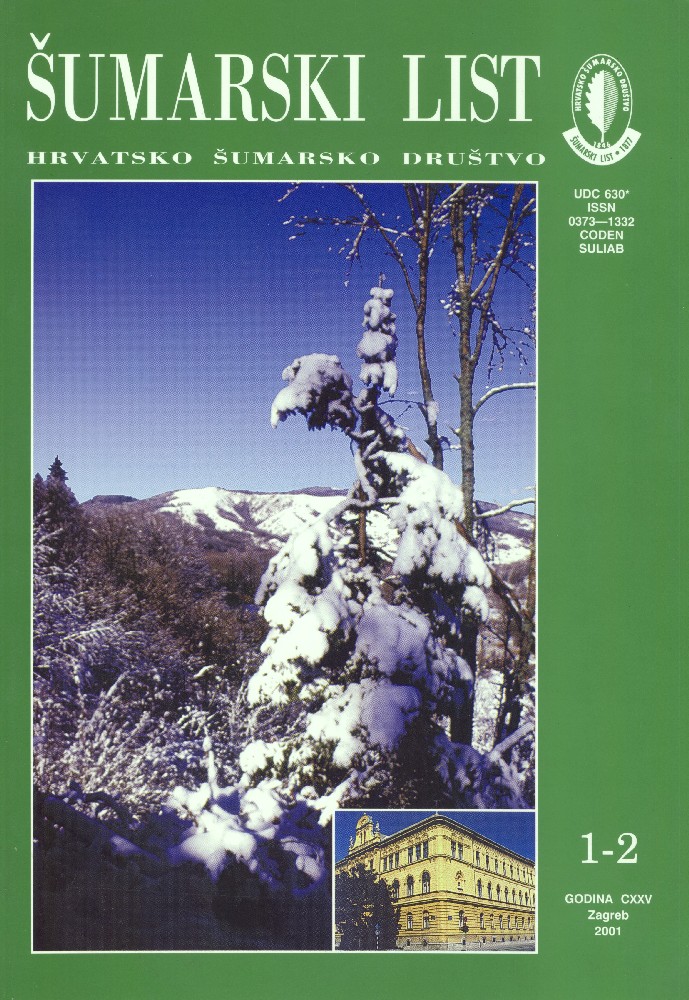| |
| IZVORNI ZNANSTVENI ČLANCI |
| |
|
|
| Lukić, N. | UDK 630* 561 +182.2 (Fagus sylvatica L.) |
| Dendroclimatology Analysis of Common Beech (Fagus sylvatica L.) on Papuk
pdf
HR
EN
|
3 |
| Božić, M., Čavlović, J. | UDK 630* 622 + 624 + 522 (001) |
| The Relationship Between Dominant Height. Dimension of Crop Maturity and Normal Growing Stock in Selection Stands
pdf
HR
EN
|
9 |
| Franjić, J., Škvorc, Ž., Čarni, A. | UDK 630* 188(001) |
| Numerical Analysis of Phytosociological Releves in Beech-Fir Forests (Abieti-Fagetum s. l.) in Croatia
pdf
HR
EN
|
19 |
| Šajković, A. | UDK 630* 120 +UDK 301.153 (001) |
| The Influence of the Quality of Life on Ecological Alttitude
pdf
HR
EN
|
27 |
| |
| PREGLEDNI ČLANCI |
| |
|
|
| Sabadi, R. | UDK 630* 904 |
| Portugal, a Brief Note on its Forestry and Forest Industries
pdf
HR
EN
|
35 |
| Antonić, O. | UDK 630* 181 + 181.3 |
| Is the Pedunculate Oak species of Climatogenic Distribution in Croatia?
pdf
HR
EN
|
45 |
| |
| STRUČNI ČLANCI |
| |
|
|
| Dimitrov, T. | UDK 630* 432 |
| The Conclusion of the Croatian Government and the Proposal of Preventive Forest Fire Protection Programme in the Republic of Croatia
pdf
HR
EN
|
57 |
| Tonković, D. | UDK 630* 375 |
| Forest Railways in Croatia
pdf
HR
EN
|
63 |
Summary: Almost one century the forest rail was by greatest part the unique transportation mean in logging operation in Croatia. Even 1950 in operation was 851.7 km of forest rail, station rails and branch lines. In 16 formerly forest corporations in operation were 74 mainly steam engines with some Diesel engines, and 1848 forest railway trucks for logs, pitprops, other long industrial roundwood, as well as for fuelwood and pulpwood. By gradual rise of gros domestic product, technical development and acceptable prices of trucks, the forest rail has disappeared in mid fifties. This period of intensive investment into inevitable infrastructural premise - forest extension by roads. Such an extension corresponds to the new concept of modern sustained yield management of forests, after the mature and overmature stands were turned into young, close to nature stands, which if they were to remain so, require continued care, possible only in circumstances of existing optimal road network.
Key words: Forest rails; Hauling and transportation of timber; logging as sylvicultural care of stands; Logging operations |



